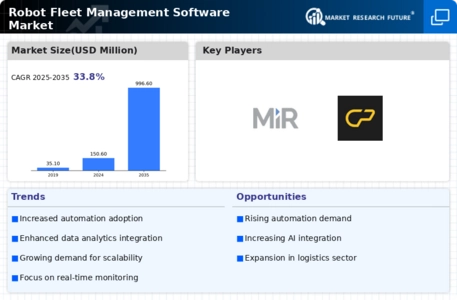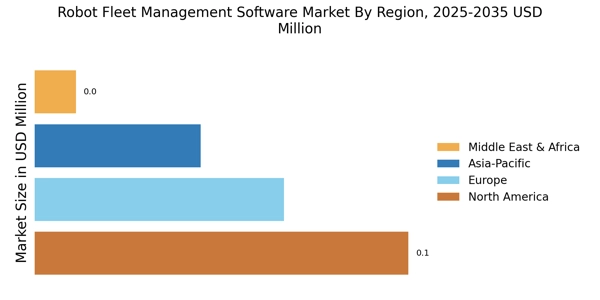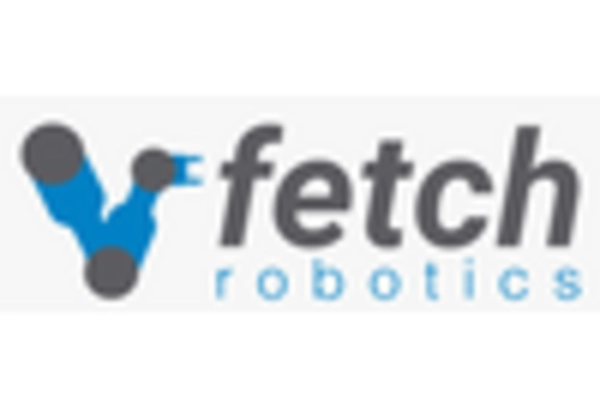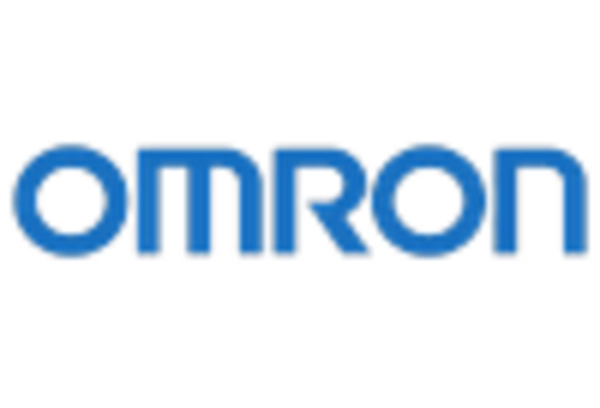Rising Demand for Automation
The Robot Fleet Management Software Market is experiencing a notable surge in demand for automation across various sectors. Industries such as logistics, manufacturing, and agriculture are increasingly adopting automated solutions to enhance operational efficiency. According to recent data, the automation market is projected to grow at a compound annual growth rate of approximately 10% over the next five years. This trend indicates a strong inclination towards integrating robotic systems, which necessitates sophisticated fleet management software to optimize performance and reduce operational costs. As organizations strive to remain competitive, the need for effective management of robotic fleets becomes paramount, driving the growth of the Robot Fleet Management Software Market.
Growing Investment in Robotics
Investment in robotics is on the rise, which is positively impacting the Robot Fleet Management Software Market. Venture capital funding for robotics startups has seen a substantial increase, with investments reaching over USD 5 billion in the past year alone. This influx of capital is fostering innovation and the development of advanced fleet management solutions. As companies seek to leverage robotic technologies for competitive advantage, the demand for sophisticated software to manage these fleets is likely to escalate. This trend suggests a robust future for the Robot Fleet Management Software Market, as more organizations recognize the value of effective fleet management in maximizing their robotic investments.
Integration of IoT Technologies
The integration of Internet of Things (IoT) technologies is significantly influencing the Robot Fleet Management Software Market. IoT-enabled devices facilitate real-time monitoring and data collection, allowing for improved decision-making and operational efficiency. The market for IoT in fleet management is expected to reach USD 10 billion by 2026, highlighting the increasing reliance on connected devices. This integration enables fleet managers to track the performance and health of robots, ensuring optimal utilization and maintenance. Consequently, the demand for advanced fleet management software that can seamlessly integrate with IoT systems is likely to rise, further propelling the growth of the Robot Fleet Management Software Market.
Need for Enhanced Safety Protocols
Safety remains a critical concern in industries utilizing robotic fleets, thereby driving the Robot Fleet Management Software Market. As organizations implement more autonomous systems, the need for robust safety protocols becomes essential. Software solutions that incorporate safety features, such as collision avoidance and emergency stop mechanisms, are increasingly sought after. The market for safety-related software in robotics is projected to grow significantly, reflecting the industry's commitment to ensuring safe operations. This focus on safety not only protects human workers but also enhances the overall efficiency of robotic fleets, thereby contributing to the expansion of the Robot Fleet Management Software Market.
Shift Towards Data-Driven Decision Making
The shift towards data-driven decision making is reshaping the Robot Fleet Management Software Market. Organizations are increasingly relying on data analytics to inform their operational strategies, leading to improved efficiency and productivity. The market for data analytics in fleet management is projected to grow significantly, as companies seek to harness insights from their robotic operations. By utilizing advanced analytics, fleet managers can optimize routes, predict maintenance needs, and enhance overall fleet performance. This trend underscores the importance of integrating data analytics capabilities into fleet management software, thereby driving the growth of the Robot Fleet Management Software Market.


















Leave a Comment